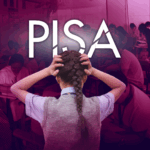During a House of Representatives Committee on Basic Education hearing, it was revealed by the Department of Education that 10,018 public schools have no localized anti-bullying policy despite being required under the Republic Act 10627.
There were also gaps in the law often due to inconsistent enforcement, lack of awareness, and insufficient resources for proper support systems, where it undermines the effectiveness of the law.
Second Congressional Commission on Education (EDCOM 2) Executive Director Dr. Karol Mark Yee discussed how bullying and other similar incidents affect a student’s performance.
“Students who were never bullied scored 351 in math, while those who reported being bullied weekly scored 269. In science, those who were not bullied scored 318, while those who reported being bullied weekly scored 214,” Yee said.
Grade 4 students who experienced and encountered bullying suffer and have to live with extreme trauma while facing a decline in their math and science performance, data from Trends in International Mathematics and Science Study (TIMMS) cited.
The implementation of anti-bullying laws was designed to create safer and friendlier environments, especially within school premises. However, despite these efforts, significant lapses persist.
Experiences of students
According to the Programme International Students Assessment (PISA) 2019, Filipino students have reported being victims of bullying: 65% few times in a month and 40% frequently or once a week.
Meanwhile, PISA 2022 reported that 1 out of 3 Filipinos are being bullied inside school premises, accounting for 43% of girls and 53% of boys encountering incidents multiple times a month.
The recorded data from the Philippines of PISA 2019 and 2022 is significantly higher in numbers compared to the average of the Organization for Economic Cooperation and Development (OECD), which is 20% of girls and 21% of boys
Lacking Educ-action
TIMMS 2019 data noted that a student’s performance in the classroom can decline significantly once bullying is experienced, which can also be affected by depriving students of a safe school environment.
“The worst consequence of bullying is student disengagement. This disengagement not only hampers their academic performance but can also lead to long-term educational disinterest,” Dr. Allan Bernardo, a member of the EDCOM 2 Standing Committee stated.
Bullied students may be affected by their experience and reflect on their academic through unable to follow or to pay proper attention to their study, missed opportunities to participate with their colleagues, cannot enjoy school activities and events, and lose concentration when they are attending their classes
Law amendments
According to the Learner Rights and Protection Office of DepeD, there was a surge of bullying cases from 1,158 to 20,172 between 2013, when the Anti-bullying Law was passed, to 2018.
EDCOM2 Co-Chairperson Rep. Roman Romulo argued that the law made in 2013 is not the problem but rather the implementation of rules and regulations of DepEd Order No. 55, series of 2013, where it must be amended.
“We have strengthened the learner protection office to increase capacity and ensure more people are available to help victims,” DepEd Secretary Sonny Angara said.
He also added that prioritizing filling guidance counselors or similar positions is a ‘must’ to ensure there are people to help the students that are being bullied.
EDCOM2 laid out its initial recommendations for revisions to the IRR, including: clearly defining the definition of the different types of bullying and the prohibited acts related to each, ensuring that each school has a localized anti-bullying policy, formalization of the Learner Rights Protection Office, providing training to guidance-designates, teachers, parents, and learners to enhance awareness of bullying, and providing funds to implement school-based efforts against bullying.








